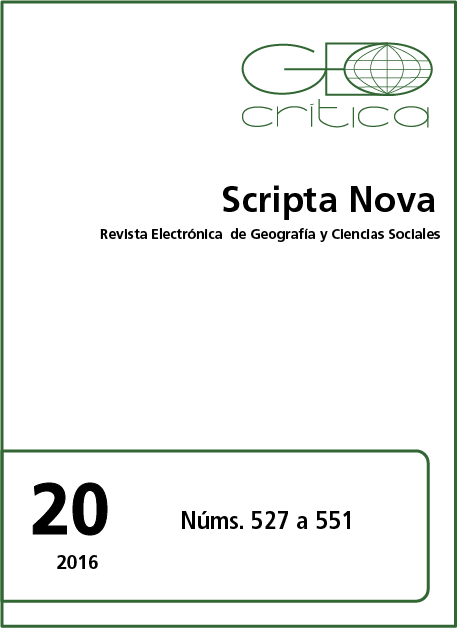527. Morphologic model of urban growth induced by the railway system infrastructure. Case study for 25 Catalan cities
DOI:
https://doi.org/10.1344/sn2016.20.15789Keywords:
Model, city, railway, morphology, barrier effectAbstract
Since the XIX Century, Catalan cities have undergone the biggest growth in history regarding their population and urban extension. Transportation systems have contributed to such growth, making the cities more accessible, but at the same time morphologically determining the growth of the urban fabric. In order to demonstrate this, historical maps, urban plans, and socio-economic data of the 25 Catalan cities are analyzed. Obtaining a cartographic reconstruction of the undergone evolution using Geographic Information Systems (GIS), which allow us to compare different time periods. From the comparison, growth patterns are established relating cities with the railroad infrastructure, and which can be grouped together forming a theoretical model. The model proposed consists of six stages. The most representative ones show the attraction that the railroad station exerts over the city, the barrier effect caused by the railway system, as well as the projects of urban railroad systems improvement and integration.Downloads
Issue
Section
Articles
License
Los autores que publican en esta revista están de acuerdo con los siguientes términos:
- Los autores conservan los derechos de autoría y otorgan a la revista el derecho de primera publicación, cin la obra disponible simultáneamente bajo una Licéncia de Atribución Compartir igual de Creative Commons que permite compartir la obra con terceros, siempre que estos reconozcan la autoría y la publicación inicial en esta revista.
- Los autores son libres de realizar acuerdos contractuales adicionales independientes para la distribución no exclusiva de la versió de la obra publicada en la revista (com por ejemplo la publicación en un repositorio institucional o en un libro), siempre que se reconozca la publicación inicial en esta revista.





